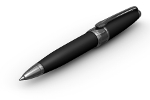 |
We love to learn new languages! | 17 Minute Languages | About us | Privacy Policy | Contact Us | Log in: Access to your language course | | Home: Language Learning Blog | |
 |
We love to learn new languages! | 17 Minute Languages | About us | Privacy Policy | Contact Us | Log in: Access to your language course | | Home: Language Learning Blog | |

|
Bosnian is spoken by about three million people most of whom live in Bosnia and Herzegovina (abbr. BiH).
|
Native speakers of Bosnian are to be found in Bosnia and Herzegovina, but also in Croatia, Serbia, Montenegro, Kosovo, Albanian, Turkey, the USA and in all the countries of Western Europe.
The most famous translators were the brothers Cyril and Methodius.
The two Slavic brothers developed the Glagolithic alphabet, to create a complete script for the Slavic languages.
Later at the court of the Bulgarian king Boris,
Cyrillic emerged as the alphabet of the Slavic languages
from the
Greek alphabet and a few letters from the Glagolithic alphabet.
This form of Cyrillic is particularly important for Orthodox church people, namely the people of modern Serbia.
For the people that belong to the Catholic Church, mostly those that live in today's Croatia, the first script was Glagolithic, but this was then replaced with the Roman alphabet.
The Roman alphabet was however extended to include a few additional letters from the Czech alphabet.

|
In the 20th Century Bosnia was a part of Yugoslavia, in which Serbo-Croatian was the official language. |
|
During the course of history Bosnian has been written in various scripts:
|

|
In Bosnia “Bosančica“ was particularly used by educated women from the nobility and was later viewed a woman’s script.
There is also a version of the Arabic script adapted to Bosnian.
Sometimes one encounters texts written in this script.
Alhamijado Literature: this literature is written in an Eastern language, that in Bosnian was called “Arebica”.
It was heavily connected with Pan-Turkism.
The most famous representative of this genre was Mehmed Hevaji Uskufi.
Uskufi compiled the first “Bosnian Turkish Dictionary” in the 16th century.
His dictionary is one of the oldest in the South Slavic languages.
Today Bosnian and also Croatian is usually written with the Roman alphabet.
Documents in Cyrillic are relatively rare.
We have prepared a collection of useful links for you.
Perhaps they will be interesting for you?